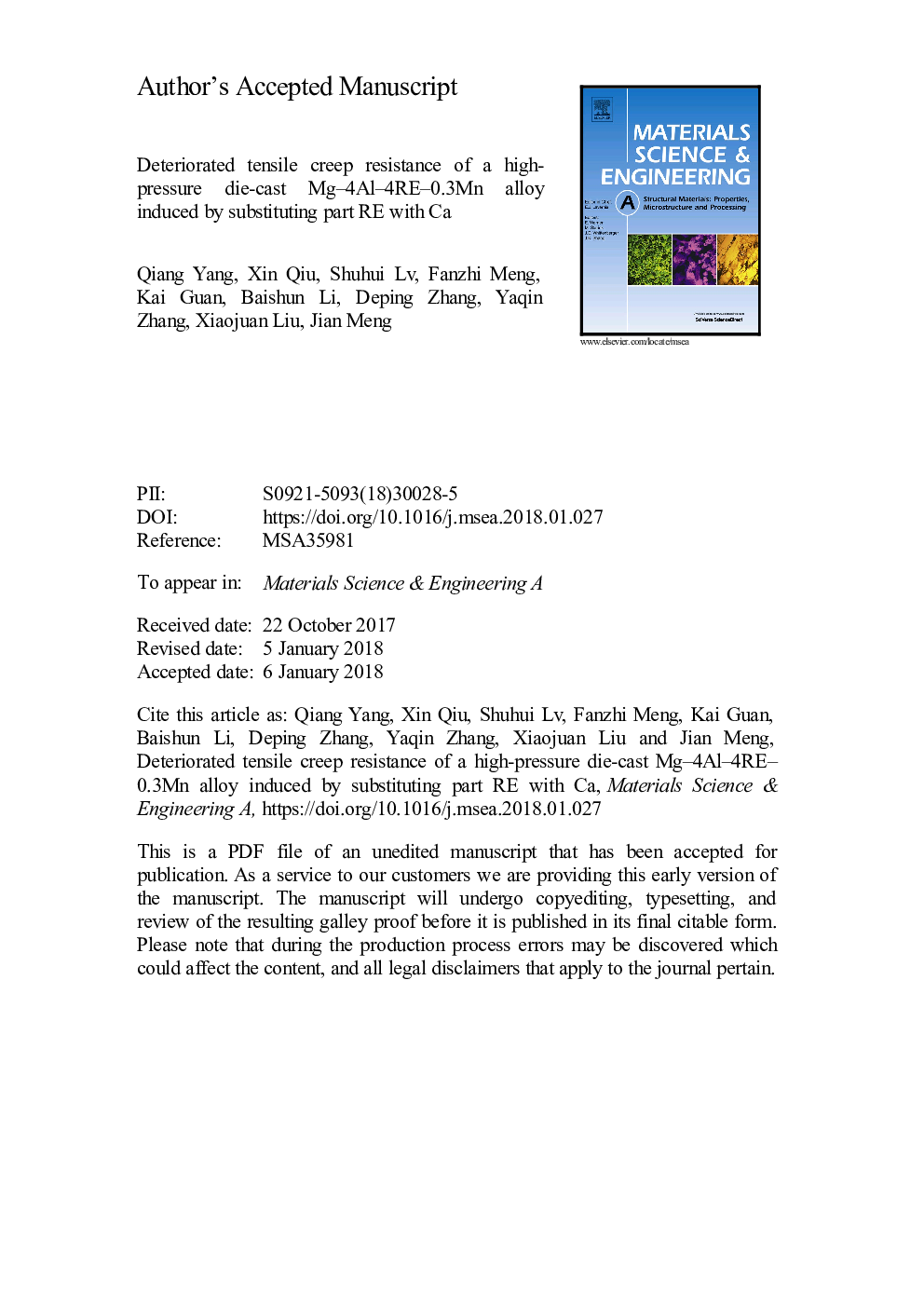| Article ID | Journal | Published Year | Pages | File Type |
|---|---|---|---|---|
| 7973467 | Materials Science and Engineering: A | 2018 | 32 Pages |
Abstract
Tensile creep resistance of a high-pressure die-cast Mg-4Al-4RE-0.3Mn (AE44) alloy was significantly deteriorated after substituting part RE with Ca. According to traditional power-law creep theories, the stress exponent and the activation energy were revealed as 6 and 217 kJ/mol, which indicate inconsistent mechanisms of dislocation climb and dislocation cross-slip, respectively. Then, transmission electron microscopy (TEM) observations illustrate that dislocation substructures developed during creep are variational with precipitate characters in α-Mg grains, creep stress levels and creep temperatures. Therefore, both stress exponent and activation energy obtained from traditional power-law creep theories are meaningless for the AE44 alloy with part RE substituted by Ca. Finally, the shrink of C36 phase lattice, the precipitation of Al2Ca precipitates and the denuded zones were observed in the crept samples, and all of them are responsible for the deterioration in creep resistance of the AEX422 alloy. Also, this paper provides insight into alloy design principles for further development of creep-resistance Mg-Al-RE based alloys.
Keywords
Related Topics
Physical Sciences and Engineering
Materials Science
Materials Science (General)
Authors
Qiang Yang, Xin Qiu, Shuhui Lv, Fanzhi Meng, Kai Guan, Baishun Li, Deping Zhang, Yaqin Zhang, Xiaojuan Liu, Jian Meng,
